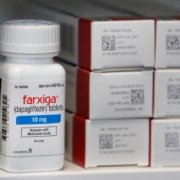Siding with Novo and Lilly, court agrees to first tackle ‘cross cutting issues” in GLP-1 litigations
Siding with Novo and Lilly, court agrees to first tackle ‘cross cutting issues” in GLP-1 litigations
A district court in Pennsylvania last week agreed to first address two questions—what it calls “cross cutting issues”—that are central to the hundreds of lawsuits against Novo Nordisk and Eli Lilly regarding side effects allegedly caused by their GLP-1 therapies.
In an 11-page document, Judge Karen Spencer Marston agreed with the pharma companies that the court must “prioritize the resolution” of diagnostic testing for gastroparesis, or paralysis of the stomach muscles, in order to ensure that the complaints against the drugmakers involve genuine and reliable diagnoses of the side effect.
Marston also agreed that it was important to first address the question of preemption and warnings—that is, to determine if the lawsuits are preempted by federal law or otherwise hold no water because of precautions included in the therapies’ labels.
In siding with Novo and Lilly, Marston agreed that “it is worthwhile for the parties, and the Court, to know at the beginning of this litigation whether gastroparesis may be reliably diagnosed in a clinical setting absent objective testing,” according to the ruling. Otherwise, “it could severely limit the number and nature of the claims.”
However, the judge deferred decision on Novo and Lilly’s request to prioritize the early discovery and motion on whether the incretin treatments are indeed causative of the adverse events cited in the lawsuits.
Marston’s ruling is the latest development in the legal saga surrounding Novo and Lilly’s widely popular GLP-1 therapies, which are indicated for type 2 diabetes and chronic weight management. In recent months, the companies have been on the receiving end of hundreds of patient lawsuits claiming that the drugs have resulted in excessive gastrointestinal symptoms—sometimes even necessitating surgical interventions.




 Getty
Getty





